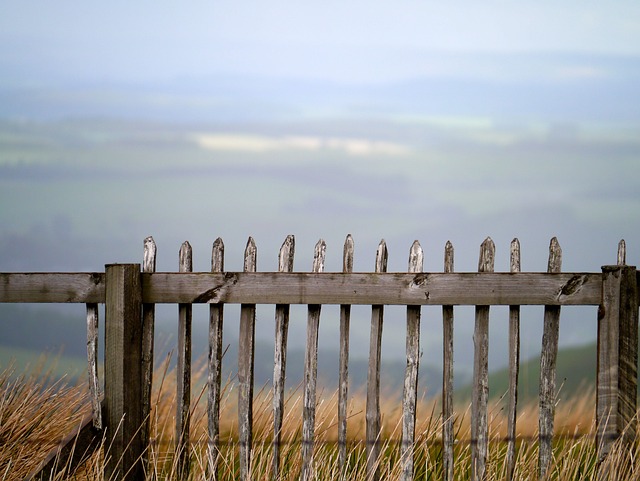Looking to enhance your New Bedford, Massachusetts property with a DIY fence installation? This comprehensive guide offers invaluable tips for every step of the process. From planning your fence design and securing necessary permits to choosing durable materials, digging optimal post holes, assembling your fence, and maintaining it for years to come – we’ve got you covered. Whether you’re aiming for security, privacy, or simply an aesthetically pleasing outdoor space, these expert instructions will empower you to successfully install your dream fence.
- Planning Your Fence: Measuring and Permits
- Choosing the Right Material for Your Yard
- Digging Holes: Proper Post Placement
- Assembling Your Fence: Step-by-Step Guide
- Final Touches: Painting and Maintenance Tips
Planning Your Fence: Measuring and Permits
Before breaking ground on your DIY fence project, meticulous planning is essential. Start by measuring the area where you intend to install the fence to determine the exact length and style required. Use string and stakes to outline the perimeter for a clear visual reference. This step ensures that your fence design fits seamlessly into your landscape and provides an accurate estimate for materials needed.
While many projects may not require permits, it’s crucial to check with your local authorities in New Bedford, Massachusetts, especially for residential areas. Different municipalities have specific regulations regarding fence installation, including height restrictions, set-back requirements, and material guidelines. Obtaining the necessary permits beforehand saves you time, effort, and potential legal issues during or after your project’s completion.
Choosing the Right Material for Your Yard
When it comes to DIY fence installation, one of the most important decisions you’ll make is selecting the right material. For New Bedford homeowners, considering the local climate and your yard’s unique characteristics is key. Wood fences are a popular choice due to their natural aesthetic appeal and relative affordability. However, in areas with harsh winters and high humidity, rot and pest damage can be an issue, requiring more frequent maintenance.
Alternatively, vinyl fences offer low-maintenance benefits as they’re resistant to rot, rust, and peeling. They also come in various styles and colors, allowing you to match your fence to your home’s architecture or personal taste. Metal fences are durable and secure options but can be pricier and might not blend as well with the surrounding landscape. Always assess your yard’s needs, climate, and budget before making a final decision on the best material for your DIY fence installation project.
Digging Holes: Proper Post Placement
When installing a fence, proper post placement is crucial for both structural integrity and aesthetic appeal. In New Bedford, Massachusetts, where varying soil conditions may exist, digging holes for fence posts requires careful consideration. Before breaking ground, research your property’s soil type to determine if it’s sandy, loamy, or clay-like. This knowledge will help you choose the appropriate hole depth and post spacing.
For instance, in dense clay soil, holes should be deeper and wider to accommodate the necessary backfilling and ensure posts remain stable. Conversely, sandy soils may require shallower but broader holes with more substantial gravel bases to prevent settling. Proper post placement involves setting each post at least one-third of its height into the ground, ensuring a strong foundation that can withstand local weather patterns and potential seasonal changes.
Assembling Your Fence: Step-by-Step Guide
Assembling your fence is a crucial step in the installation process. Begin by unrolling the fence material and inspecting it for any damage. Ensure all components are present, including posts, rails, and panels. Sort the parts according to their designated locations on your property.
Follow the manufacturer’s instructions carefully as you assemble the fence. Most kits come with detailed guidelines, outlining each step from post placement to panel attachment. Use tools like a drill, screwdriver, or wrench for secure connections. Once assembled, double-check all joints and ensure stability before proceeding to the next stage of installation.
Final Touches: Painting and Maintenance Tips
After completing the fence installation, the final touches involve painting and regular maintenance. Consider a fresh coat of paint to protect your fence from the New Bedford, Massachusetts weather and enhance its aesthetic appeal. Use a durable outdoor paint suitable for wood or vinyl fences, ensuring it matches your desired color scheme. Allow adequate time for drying between coats for optimal results.
Regular maintenance is key to keeping your new fence in top condition. This includes periodic cleaning, repainting as needed, and inspecting for any signs of damage or wear. Keep an eye out for loose boards, broken posts, or rusted hardware, addressing these issues promptly to prevent further complications. Regular care will ensure your fence remains a functional and attractive addition to your New Bedford property for years to come.
